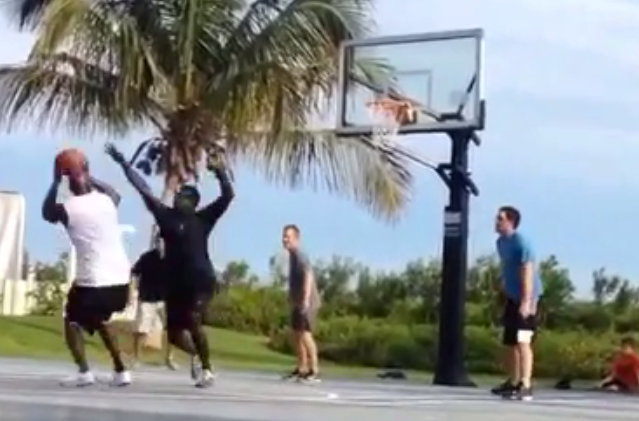The “fly ball revolution” has swept through professional baseball over the past few years. Josh Donaldson and Justin Turner were some of the earlier cases, but more frequently, we’ve seen players like Yonder Alonso and Cleveland’s own Francisco Lindor increase their home run output by hitting more fly balls. At this point, whenever a player starts hitting for unexpected power, his fly ball rate is one of the first places you should look for an explanation.
That brings us to Eric Stamets. Traded to the Indians in 2015 for David Murphy, the 25-year-old has always been a glove-first prospect. Consider this quote from minorleagueball.com:
Every last person that discusses or sees Stamets gushes over his defensive ability. Standing at six feet, 190 pounds, Stamets has a big arm and tremendous speed. His footwork along with his speed give him solid range (4.61 career range factor) and helps him make difficult plays seem easy (.974 career fielding percentage).
However, the main knock on Stamets is that, as Fangraph’s Chris Mitchell said in February of 2016, “he can’t hit a lick.” This wasn’t an exaggeration. Prior to last season, Stamets had failed to ever put up a wRC+ better than 92 in his minor league career – and even that was in his first season, at Low-A ball in 2012. Stamets had always made excellent contact, with his strikeout rate between 2012-2015 sitting between 10-16%, but he never generated any sort of power, totaling 14 home runs in those four seasons. His mediocre-at-best walk rate didn’t help his cause either. Walking between 5-7% of the time isn’t enough to help compensate for poor power, even with good contact skills.
As good as Stamets’ defense was, his complete lack of offense was holding him back. He hasn’t been considered a legitimate MLB prospect in years, and his ceiling looked something like a utility-man in the MLB, with a more likely outcome as a system depth/emergency option. No doubt, Stamets realized it was make-or-break time for his career.
Beginning last season and continuing in 2017, Stamets’ offensive profile began to change. In 69 games at AA Akron last year, the shortstop tied his career high in walk rate (7.5%), and posted career highs in strikeout rate (23.9%), fly ball rate (47.2%), home run per fly ball rate (7.2%), and wRC+ (109).
Stamets was promoted midseason to AAA Columbus, and like most players advancing levels, he struggled. In 22 games, his strikeout rate jumped to over 30%, and his walk rate dropped to a career-low 3.6%. However, his fly ball rate sat at 52.1%, even higher than it was in Akron. While Stamets struggled to produce, the data pointed to a continued shift in approach: Stamets was sacrificing some of his contact ability, in an effort to produce more fly balls (and extra base hits).
When Stamets opened the season back at Akron in 2017, he had a strong offensive showing. In 13 games, the Ohio-native posted a 134 wRC+, along with a 46.2% fly ball rate (lower than his 2016 marks, but still high for his career). He continued to strikeout frequently (27.2% k-rate), but this time, showcased improved plate discipline, with a 16.7% walk rate. With that progress, Stamets was sent to AAA Columbus, where he’s been outstanding this season.
In 36 games at Columbus this season, Stamets has nine home runs – the same amount as he had in his first 294 professional games. The power surge has come with a .303/.364/.630 slash line, three stolen bases, and a 174 wRC+. The most interesting part? Stamets’ fly ball rate in Columbus has been the best of his career, at 54.9%, as has his pull rate, at 62.8%. His walk rate of 7.5% has been solid, and he’s managed to limit his strikeouts to a decent 20.9% rate. All signs would point to Stamets’ continuing with his new approach, to maximize his power. That power output, combined with decent contact ability, plate discipline, and speed, results in a suddenly intriguing offensive profile.
To be fair, there are many red flags to consider here. First, Columbus’ Huntington Park is a notorious hitter’s stadium. Stamets is far from the first prospect to see a power surge on promotion to the Clipper’s – and all but one of Stamets’ home runs have come at home this season. Second, the sample size of 36 games is very small. Third, Stamets’ home run per fly ball sits at 18%, which is unsustainable. Given all these factors, no one should believe Stamets will be a dominant hitter going forward, as he has been this season.
But, the expectation isn’t that Eric Stamets turned himself into a future Silver Slugger – he almost certainly hasn’t, no matter how impressive his numbers with Columbus have been. The intriguing part is the change in approach from Stamets. He’s clearly altered his hitting profile, going from a contact oriented, powerless hitter, to a fly-ball hitter. Certainly, the change has increased Stamets’ production, giving his career year at Akron in 2016 and Columbus so far in 2017. If Stamets can maintain any sort of elevated offensive production, he has the potential to make an impact at the MLB level, given his defensive ability.
Add The Sports Daily to your Google News Feed!
